Last updated: June 27, 2017
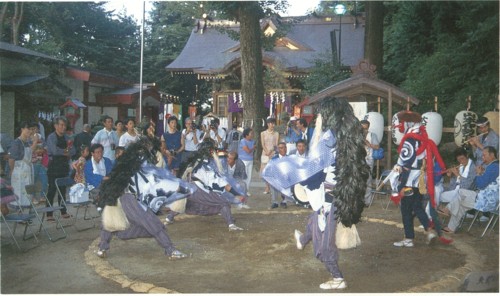
Anazawa Tenjin Shrine Lion Dance (city designated cultural property)
The performing art of dancing while wearing a lion's head is called shishimai (shishimai), but it is common for two people to dance inside a cloth attached to a lion's head. ) and other festivals.
In contrast, the lion dance, performed by one person wearing a lion head, has been passed down to the Tohoku and Kanto regions. In the Kanto region, one female lion (mejishi) and two male lions (ojishi) dance as a pair, called the three lion dance (three lion dance) (furyuuji standing alone). It is also called shi). The Three Lion Dance is performed at 84 locations in Tokyo, including those that are currently closed, and is especially common in western areas such as Okutama Town, Ome City, Hibara Village, and Hachioji City.
In the city, there are Yanoguchi (Anazawa Tenjin Shrine), Higashi Naganuma (Aoi Shrine), Hyakumura (Tate Shrine), Daimaru (Kannabi Tonomame no Ten). The Three Lion Dance was passed down at four shrines (Oomato no Tsuno Tenjinsha), but now it is only performed at Yanoguchi and Higashi-Naganuma.
The Seiyu Shrine Lion Dance in Higashi-Naganuma is dedicated on October 1st, the day of the annual festival. Although there are no documents remaining regarding its origin, it was suspended for 23 years from 1912, but was revived in 1932 and continues to this day. There is an old document (komonjo) that records an incident that occurred due to a lion dance dedicated at a festival at Seiyu Shrine in 1775 in the middle of the Edo period, and from this period It seems certain that it goes back a long way. The lion consists of three heads: a large lion, a kyujishi, and a female lion.The large lion has a sword-shaped horn and a kyujishi. has twisted horns, and the female lion does not have horns. All have beads on their foreheads. These three lions are said to model the deities of Bushu Mitake, Chinjuaonuma, and Soshu Oyama. The tengu who dances with the lion wears a round, thick red sash, and holds a fan in his right hand and a gourd in his left. Three lions and a tengu (tengu) dance around a dohyo ring built in front of the main hall of the shrine.
The lion dance at Anazawa Tenjin Shrine in Yanoguchi is dedicated every year on August 25th, the day of the annual festival. There are no documents left regarding the origin of the lion dance, but it is thought to have begun around the early to mid-Edo period, just like the Seiyu Shrine lion dance. Although it was temporarily suspended in the 1930s, it was revived in the late 1920s and continues to this day. The lion dance is composed of three lions: a large lion, a kyujishi, and a female lion, and a tengu (tengu), and is almost the same dance as the Seiyu Shrine lion dance. Masu. On the day of the festival, there is a procession from the Yanoguchi Neighborhood Hall to the dohyo in front of the main hall of Anazawa Tenjin Shrine, and the sight of them dancing up the stone steps of the shrine is especially heroic.
In both lion dances, in addition to lions and tengu, performers such as fuefuki, kaifuki, and utakata appear to liven up the occasion. The lion dance, which was performed on the grounds of shrines to pray for a good harvest, warding off evil spirits, and praying for rain, was an expression of farmers' wishes, and at the same time was a time when there was little entertainment. It was also fun.
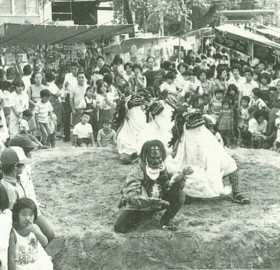
Seiyu Shrine Lion Dance (city-designated cultural property)
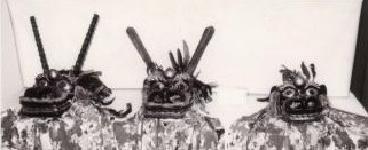
Old lion head of Anazawa Tenjin Shrine (From left: Gujishi, Ojishi, Female lion)
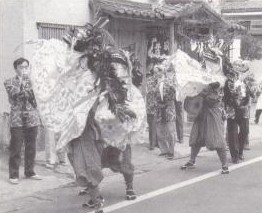
A lion parading through the area (Aoi Shrine lion dance)
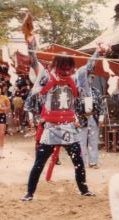
Tengu (Lion Dance at Seiyu Shrine)
Inagi City Education Department Lifelong Learning Division Tel: 042-377-2121